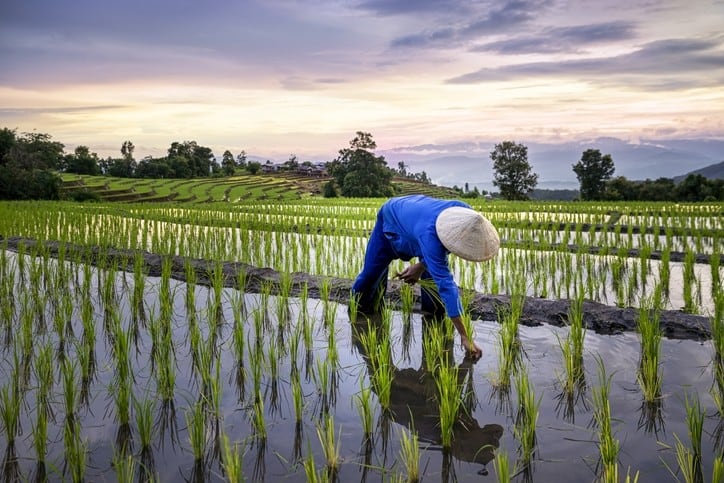Procuring food enriched with diverse nutrients is vital to ensuring robust immune systems in a country’s population. But in an era of unprecedented globalisation, food systems often grapple with multi-faceted challenges stemming from climate change, pandemics and political turmoil.
A recent study has delved into the intricacies of China's local agriculture landscape, shedding light on gaps in nutrition supply adequacy and distribution equity amidst potential trade disruptions.
The comprehensive study shed light on the vulnerabilities within China's local food systems, revealing significant challenges in ensuring adequate nutrient supply and equitable distribution across provinces. The research, which examined provincial food flows, nutrient constituents and population requirements, underscored the pressing need for targeted interventions to address these shortcomings.
The study, undertaken to analyse the role of trade in shaping nutrition supplies within China's diverse provinces, scrutinised the distribution of nutrients across agri-food categories, from production to consumption. It aimed to discern the adequacy and equity of nutrition provision, comparing local self-supply systems with practical market dynamics.
Data analysis, nutrition requirements and local nutrient challenges
It drew data from various sources, including statistical yearbooks from the National Bureau of Statistics of China and population information from the national census. Food categories were classified into nine groups, focusing on crucial nutrients such as protein, calcium, iron and vitamins. Utilising complex methodologies, the researchers assessed nutrient requirements for different age groups and mapped local food production capacities at the provincial level.
The researchers’ findings revealed significant disparities across China's provinces. Among the key revelations, was that 12 out of 31 provinces in China had been facing challenges in achieving sufficient iron supply. Analysis also revealed significant variations in nutrient requirements across age groups, with adolescents and young adults exhibiting the highest demands.
However, the study noted deficiencies in meeting these requirements, particularly for iron, in the local self-supply system. While some provinces demonstrated adequate nutrient supply rates, others struggled to meet demand due to factors such as soil quality and climate. The analysis indicated that 52% to 90% of agricultural output, excluding iron, was available for diet provisioning nationwide.
Furthermore, the study highlighted several challenges within local nutrient flows, including significant losses during production, storage, and transportation. Non-food uses of agricultural commodities further strained nutrient availability for human consumption. Moreover, certain provinces faced difficulties in achieving self-sufficiency in key nutrients, exacerbating disparities in nutrient distribution across different regions.
Strategies to address vulnerabilities
To address the aforementioned vulnerabilities, the study proposed several strategies. These included enhancing agricultural practices to minimise food losses, promoting regional coordination to optimise nutrient production and distribution, and leveraging international trade to mitigate disparities in nutrient availability. Additionally, targeted interventions were recommended to address specific deficiencies, such as iron supplementation programmes in regions with inadequate supply.
While the study underscored the pivotal role of food trade in bolstering nutrition security (thereby mitigating risks associated with micronutrient deficiencies), it also warned of the imperative need for vigilance in the face of potential shocks or shifts in trade patterns. Moreover, the COVID-19 pandemic, alongside previous crises, underscored the fragility of global food systems and the necessity for resilient local provisioning strategies.
At the same time, with regional disparities in nutrition supply acknowledged as a notable concern, coastal provinces exhibited better nutrition supplies compared to their less developed inland counterparts. Iron deficiency, a prevalent nutritional challenge in China, emphasised the complexity of addressing nutritional gaps amidst evolving dietary patterns and production pressures.
Additionally, though trade contributed to enhanced nutrient distribution equity, concerns over food safety and vulnerabilities to market shocks would necessitate a multi-pronged approach. As such, the study advocated for targeted improvements, emphasising the optimisation of local food systems and the diversification of markets.
Limitations and future interventions
The researchers argued that addressing underlying challenges and implementing targeted interventions, policymakers would be able to ensure a more sustainable and nutritionally secure future for all provinces. Failure to act would risk the exacerbation of existing disparities and could undermine the health and well-being of the population.
The researchers acknowledged several study limitations, namely, “the exclusion of non-exhausted nutrients and omission of stock variation, which may result in an underestimation of supply capacity”. Additionally, the local food production modelled in the study assumed “a consistent scale and structure of agriculture, whereas in reality, long-term trade impacts could influence these factors”.
Nonetheless, the researchers stated that the study balanced “the drawback of the simplified model whilst still deriving reasonable information for the vulnerability of local nutrient supply to a short-term market shock”.
They added: "Encouragingly, potential research avenues lie in scenario assessments focused on customized adjustments in cropping and livestock production, aimed at optimising and fortifying local nutrition supplies for increased resilience. Additionally, conducting temporal analyses of provincial nutrition supply holds promise in elucidating trends and shifts in environmental burdens associated with the transfer of nutrition supply through trade. These endeavours contribute to the implications of fostering a robust nutrition supply, beneficial for both human well-being and environmental sustainability."
Source: Nutrients
“Adequacy and Distribution Equity of Nutrition Supplies across China”
https://doi.org/10.3390/nu16030426
Authors: Chuan Zhao, et al.





